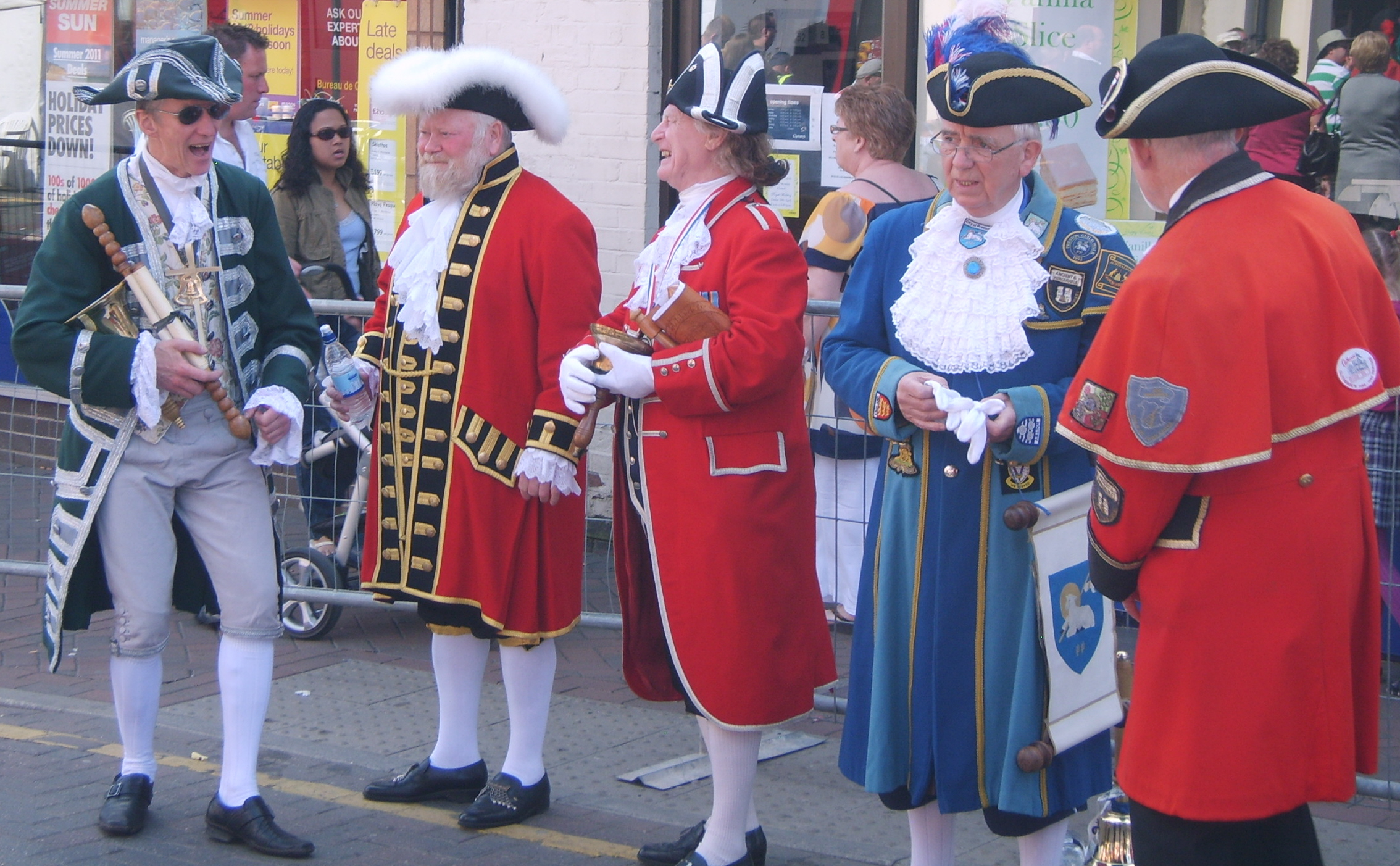The information age has changed the world. Newspapers, radio, television and the Internet feed us facts (and fiction) 24/7. In the past, townsfolk relied on a resident Town Crier – who would keep them up to date on bylaws and market days (for example). Most towns had one.
Like today, information was sometimes unwelcome. To guard against threats of violence, Town Criers acted in the name of the monarch – so to harm one was to commit treason. This is where the phrase ‘don’t shoot the messenger’ originates.
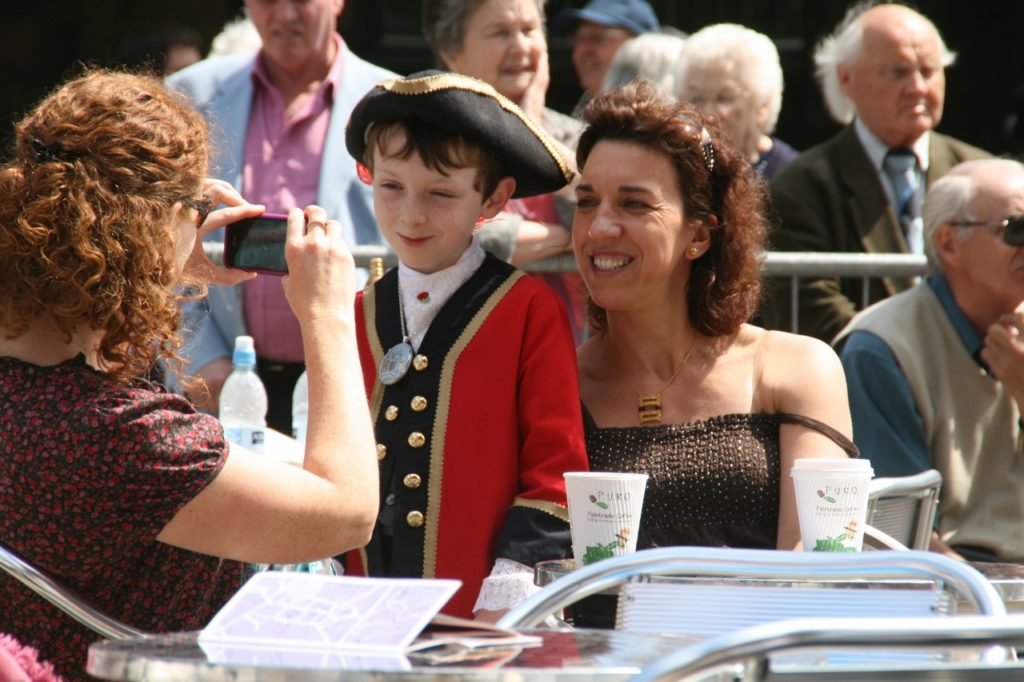
Young Town Crier Cheshire © Visit Cheshire
Surely the onslaught of print, and digital, media removes the need for a Town Crier? Of course that’s true. But tradition and heritage have a value too. The ceremonial role of Town Criers lives on in some places.
Town Criers now perform civic duties at anniversary celebrations, functions and charitable events. Some offer their services widely for a range of events and occasions. As 2017 Town Crier Champion Terry Ford states ‘It’s definitely having a revival’.
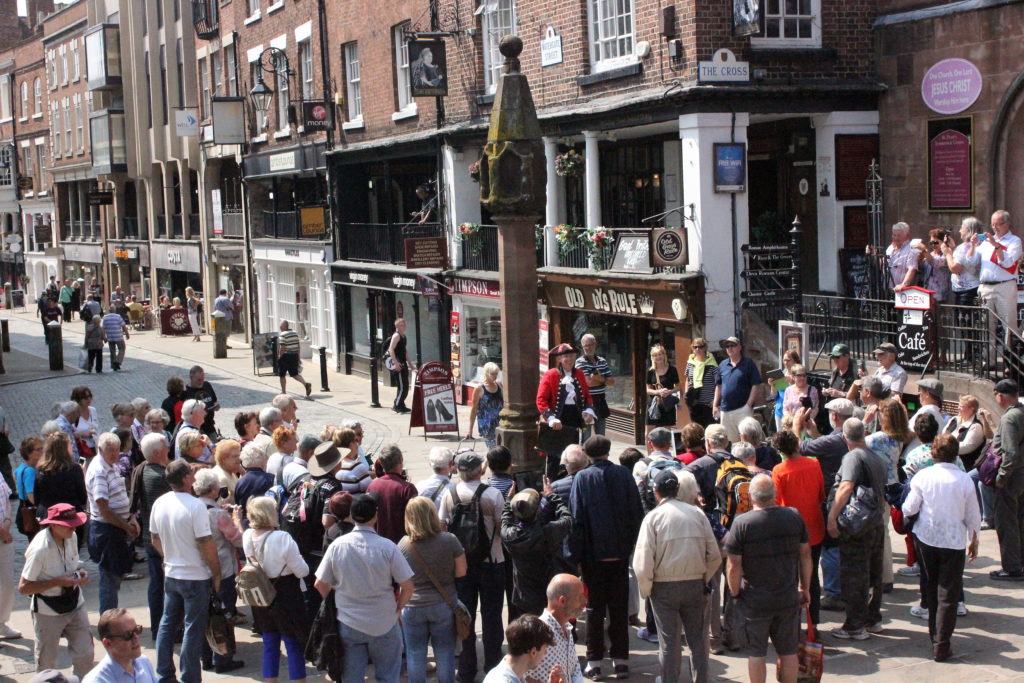
Salisbury is a recent addition to the trend and added a Town Crier City Council’s staff. Councillor Jo Broom states that ‘Salisbury has been through a huge turmoil’. She is, of course, referring to the Novichok poisoning that recently dominated headlines. The Town Crier was partly appointed to ‘get across that people are safe in Salisbury and they will be made very welcome here’.
In short, contemporary Town Criers offer a vintage form of PR for residents and visitors. They echo how towns have developed over the centuries, and the need to achieve public awareness and confidence. Here, we have a selection of towns across the UK that feature a Town Crier.
Two organisations exist to uphold, promote and preserve the role of the Town Crier. The Ancient and Honourable Guild of Town Criers was founded in 1978 – with 138 Town Criers currently registered in England and Wales. The Loyal Company of Town Criers was formed in 1993. A collective of practitioners who aim to ‘further the art and skill of town crying’. Both hold a range of competitions throughout the year. Contenders are judged on ‘volume, diction, clarity and inflection’ .
Hastings
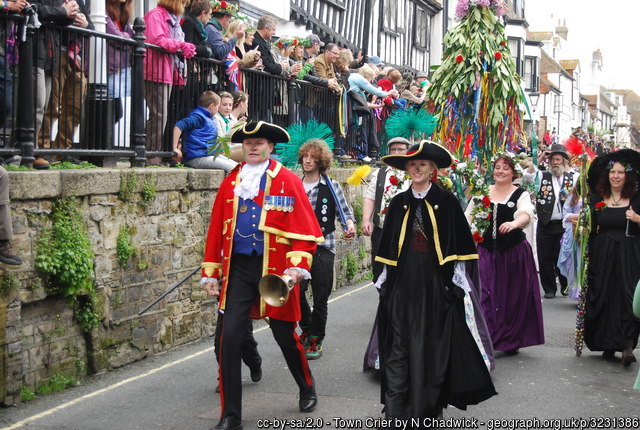
Hastings Town Crier © N Chadwick
The 66th National Town Crier Competition takes place this month in the Guild’s hometown of Hastings. As Town Crying can be traced back to 1066; as there are two men with bells on the Bayeux Tapestry, this is a fitting location.
In two heats entrants battle it out for best ‘Home Cry’ (about the town they represent) and best ‘Free Cry’ (about any topic, but which must include a reference to ‘someone famous between 1900-1980’). The occasion is ‘open’, meaning that those who are not members of the Guild are eligible to enter. The Master of Ceremonies is Jon Bartholomew (Hastings’ Town Crier and 2016 Winner of the Loyal Company of Town Criers British Championship).
Chester
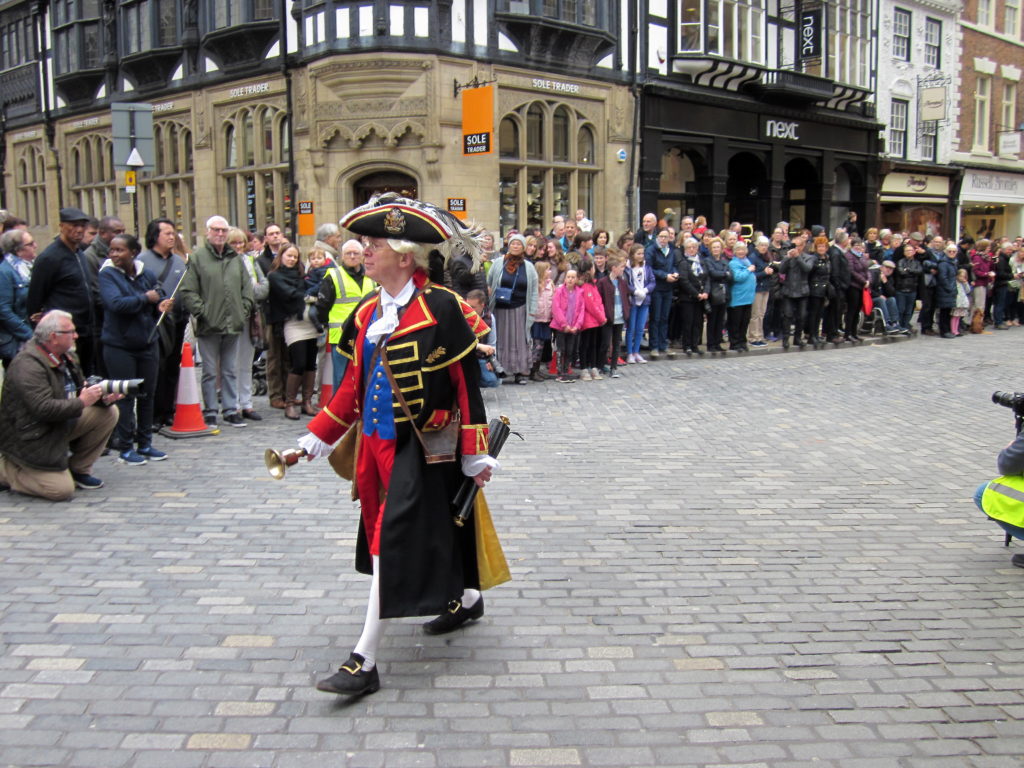
Chester is the one town in Britain to retain the tradition of regular Town Crier proclamations. Hear the Crier every Tuesday to Saturday from June to August at noon, at High Cross, a crying post since the Middle Ages).
The current Town Crier, David Mitchell, has made his passion into a career – having appeared in the films Moll Flanders and 24 Hour Party People. His one-man show For Crying Out Loud has played in Chester and Eastbourne.
Seaford
Crying for Seaford, Peter White is one of the country’s longest serving Town Criers The town appointed Peter in 1977 after crying for the Queen’s Silver Jubilee.
For over forty years, he has competed – bringing a trophy home from Chester in 2014. His uniform is crafted by Geoffrey Golding, the Queen’s Naval Uniform Maker. Peter reached second place in the World Town Crier Tournament.
Thetford
The town boasts the youngest Town Crier in the world. At just eleven years old, Harry Turburville entered a competition to scout a junior Town Crier. The town’s official Town Crier is Mike Wabe. Harry will take part in ‘A Cry for Peace in Thetford’ on November 11th, as part of a national tribute to mark the end of the First World War. Of his young colleague, Wabe states ‘he took to it like a duck to water’.
Otley

Town Crier outside the Black Bull
The first Otley town crier competition takes place in September. The Bellman Terry Ford will welcome criers from Newport to Nuneaton and Skegness to Sleaford to take part in the competition.
Wareham
Every year, on the second Saturday in July, the Town Crier organises a town crier competition. Criers from other towns converge on Wareham to compete. The first round of the competition takes place in the morning with Criers performing their home cry in front of two judges.
The Criers are marked for volume, clarity, inflection and diction. The winning Crier receives a trophy. There are also trophies for the best dressed Crier, best dressed escort and best dressed couple.
Town Crying, then, has developed with the times. Although it never disappeared completely, it has enjoyed resurgence over the past few decades. Its function may have altered, but its attractiveness to towns, lies in a certain nostalgia as we hurtle into the future

